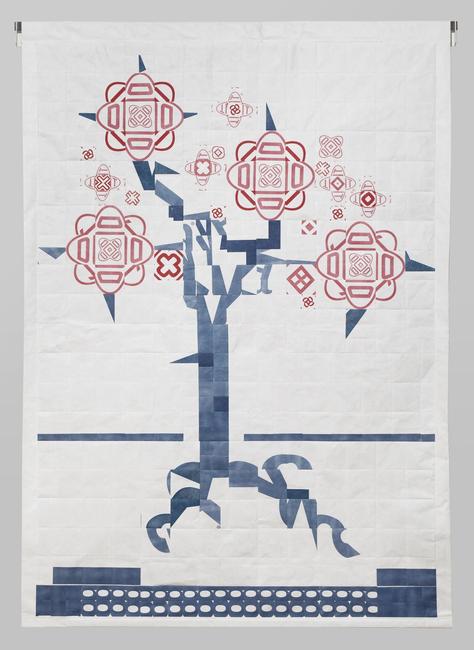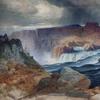Piecework: Resistance and Healing in Contemporary Textile Art at Fruitlands Museum
- HARVARD, Massachusetts
- /
- April 08, 2021

Fruitlands Museum in Harvard, Mass., has announced Piecework: Resistance and Healing in Contemporary Textile Art, opening April 24, 2021. This group exhibition features the work of four contemporary artists—Gina Adams, Alicia Henry, Andrew Mowbray, and Leslie Schomp—who work with textiles and stitching to share inventive, aesthetic approaches to critique and reconcile difficult aspects of American history.
Shown altogether in the museum’s main galleries and through site-specific interventions in Fruitlands’ historic buildings, Piecework will be the museum’s first ever major contemporary art exhibition and prominently advocates for the role of fiber arts in contemporary art discourse as an innovative medium that can critique and restore society in equal measure.

“Piecework marks a major shift in our exhibitions program,” notes Curator Shana Dumont Garr. “This is a focus on contemporary art wherein each artist is eloquently rooted in history. I see each artist in the exhibition finding a way with their art to take what is useful of the past, and bringing that wisdom forward, while innovating for the future.”
Each artist was selected to critically engage with Fruitlands’ historical spaces and collections to bolster a sense of context with the museum. Gina Adams (Ojibwe-Lakota, Irish-Lithuanian), mines archives of Indigenous history to create quilts and sculptures, highlighting the words of the broken treaties between colonists and Native peoples. Alicia Henry, a Black artist, creates layered, figurative wall hangings of Black subjects from stitched and hand-embroidered, dyed cotton, leather, felt, linen, and burlap. Andrew Mowbray points to examples of corporate collaboration with his quilts made of the industrial insulation Tyvek Home Wrap, in which he alters the logo to form dynamic patterns. Finally, Leslie Schomp raises the question of what generations might owe each other regarding climate change with a handstitched sampler placing quotes by Bronson Alcott and Charles Lane from 1843 in dialogue with David Wallace-Wells, the author of The Uninhabitable Earth: Life After Global Warming (2019).
Programming information
Trustees Members get exclusive first access to the exhibition with a Members-only Preview Weekend from 11AM-4PM on April 24th and 25th. To reserve your complimentary pass please visit thetrustees.org/program/member-preview.
Over the course of the exhibition, Gina Adams will offer an open letter-cutting program to the public. She will also collaborate with the artist Gregg Deal (Pyramid Lake Paiute) in a public, site-responsive performance.
In addition to Artist Talks, Fruitlands Museum will be offering a spring series of “Learning Fiber Arts” virtual demos on Wednesday evenings in May and June. Demos will include: Traditional Shaker Quilt Blocks, Historic Embroidery Primer, Needle Felting Toys, and Unusual Materials in Fiber Arts. Students for virtual sessions will also receive recommended materials lists, a written tutorial, and a session recording to work on their skills after the demo session. This summer an additional series of workshops will be presented in person at Fruitlands Museum.
Please see our website for the most up-to-date information about programs. thetrustees.org/fruitlands.
Contact:
Meaghan Flaherty LawtonTrustees of Reservations
mlawton@thetrustees.org
http://thetrustees.org
About Trustees of Reservations | Fruitlands Museum
Fruitlands Museum, a property of the Trustees since 2016, is a historic, natural, and cultural destination in Harvard, MA. Founded in 1914 by author and preservationist Clara Endicott Sears, the Museum takes its name from an experimental utopian community that existed on this site in 1843 and was led by Transcendentalists Bronson Alcott and Charles Lane. Fruitlands is dedicated to New England history, art, and nature, and its collections include: The Fruitlands Farmhouse, The Shaker Gallery, The Native American Gallery, and The Art Gallery. It is located on 210 acres of land with panoramic views of the Nashua River Valley, including 2.5 miles of meadows and woodland recreational trails.
















